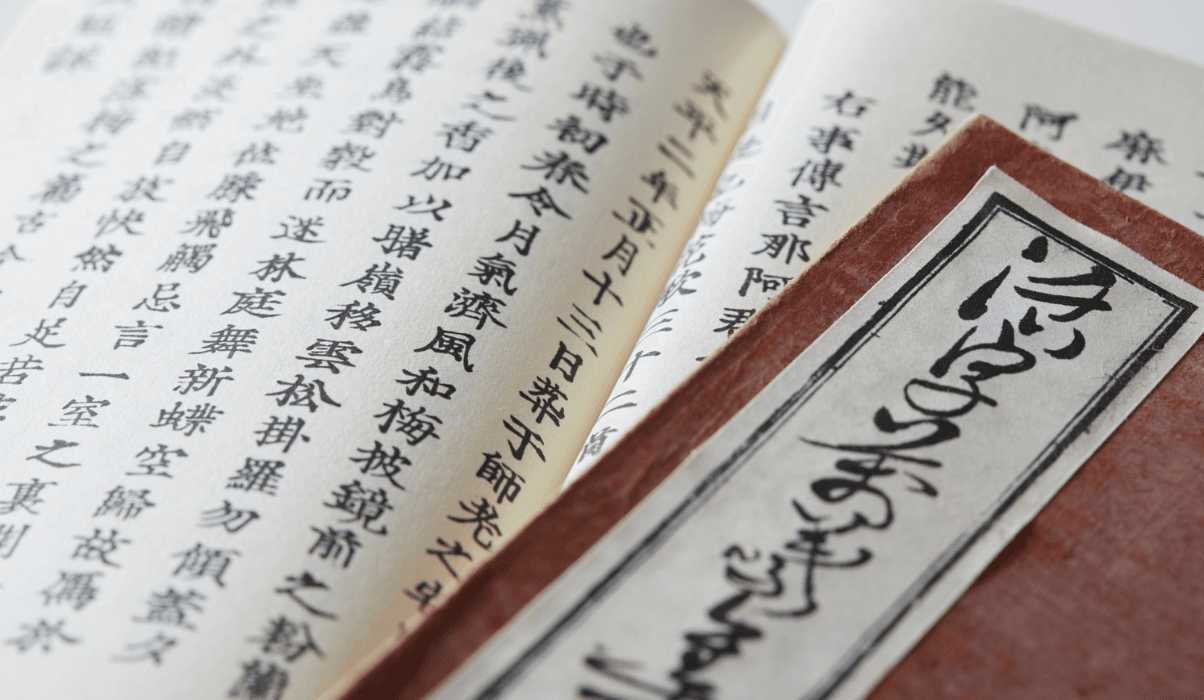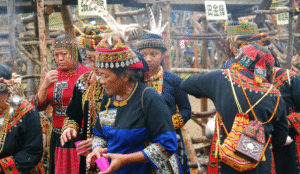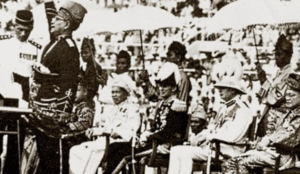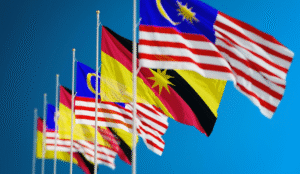Malaysian Hokkien Language: The Stories
Language is the heartbeat of culture—it connects generations, preserves traditions, and tells the stories of a people. In Malaysia, one such language that continues to echo through time is the Hokkien language. More than just a means of communication, it is a symbol of identity, pride, and resilience for the Chinese-Malaysian community, especially in Penang.
In this blog, we journey through the past and present of the Hokkien language, exploring its origins, significance, transformation, and the stories that make it a living legacy. Whether you’re curious about how to speak Hokkien language, or you’ve heard about the Hokkien dialect in Penang’s vibrant streets, this post offers insights into a heritage that continues to thrive despite modern challenges.
Frequently Asked Questions (FAQ)
1. Are Hokkien and Mandarin the same?
No, Hokkien and Mandarin are not the same. Mandarin is the official language of China and is based on the Beijing dialect. Hokkien, on the other hand, is a Southern Min (Minnan) dialect that originated in Fujian Province. While both are part of the broader Chinese language family, they are mutually unintelligible. The Hokkien language has different pronunciation, vocabulary, and sentence structure compared to Mandarin.
2. Where did Hokkien originate?
The Hokkien language originated from Fujian Province, specifically the Minnan region in southeastern China. It is one of the oldest dialects of Chinese still in use today. Chinese migrants from this region brought the language to Southeast Asia—including Malaysia—during the 19th and early 20th centuries.
3. Is Taiwanese Hokkien the same as Chinese?
Taiwanese Hokkien is a variant of the Hokkien language, not the same as standard Chinese (Mandarin). While it shares roots with the Hokkien dialect spoken in Fujian, it has evolved over time with local influences. Taiwanese Hokkien and Penang Hokkien, for example, have many similarities but also notable differences in tone, slang, and vocabulary. They are dialects of Chinese, but not the same as standard Mandarin Chinese.
4. How do you say hello in Hokkien?
In the Hokkien language, a common way to say “hello” is:
- Li ho bo? – This literally means “Are you good?” and is similar to asking “How are you?”
You can also say:
- Li ho! – Simply “You good!” (used as a greeting).
These greetings are commonly used in Penang Hokkien and other local variants.
5. What is the most important language in Malaysia?
The most important language in Malaysia is Bahasa Melayu (Malay), which is the official national language. However, Malaysia is a multilingual country, and other major languages include Mandarin, Tamil, and English. The Hokkien language is one of the most widely spoken Chinese dialects in Malaysia, particularly in Penang, where it plays a vital cultural and social role.

Historical Origins of the Hokkien Language in Malaysia
The Hokkien language traces its ancestry to Fujian Province in southeastern China, specifically the Minnan (Southern Min) region. As one of the oldest Chinese dialects still in use today, Hokkien has roots that go back over 1,500 years. The dialect evolved from Old Chinese and retained many linguistic features that have since vanished from Mandarin and other modern dialects.
The word “Hokkien” itself is derived from the Minnan pronunciation of “Fujian,” reflecting its geographical and cultural origins. Over the centuries, the language grew into a rich, expressive form of speech used by merchants, scholars, and everyday people in coastal China.
The Journey to Southeast Asia
The migration of Chinese people from Fujian to Southeast Asia began during the Ming Dynasty (14th–17th centuries) but intensified during the Qing Dynasty (17th–20th centuries) due to political instability, poverty, and economic opportunities abroad.
By the 19th century, large numbers of Hokkien-speaking Chinese began arriving in British-controlled territories like Penang (1786), Melaka (1824), and later Singapore and Klang. Many came as laborers (coolies), traders, and artisans. As they settled and built communities, the Hokkien language became the common tongue among Chinese migrants, especially in Penang where they formed the majority.
Penang became the unofficial “Hokkien capital” of Malaysia, where the dialect flourished in marketplaces, temples, and homes. It served as a lingua franca not just among the Chinese, but also in inter-ethnic interactions—often mixing with Malay, Tamil, and later English words due to colonial influence.
Evolution into a Localized Dialect
Over time, the Hokkien dialect in Malaysia—especially in Penang—developed its own distinct vocabulary and pronunciation. This localized form is commonly referred to as Penang Hokkien and is quite different from Taiwanese Hokkien or the versions spoken in Xiamen and Quanzhou, China.
Some characteristics that set Penang Hokkien apart:
- Borrowed terms from Bahasa Melayu (e.g., “makan” for eat, “kereta” for car).
- English loanwords (e.g., “lorry,” “office,” “handphone”).
- Simplified grammar and modified tones for easier daily use.
- Words or phrases adapted to local foods, festivals, and environments.
For instance, in China, “fishball” is often referred to using Mandarin or other local names, but in Penang, you’d hear the term “yu-tan” (fish egg) or just “fishball” in English—but spoken with a Hokkien twist.
Cultural Preservation Through Generations
In colonial times, many Hokkien-speaking Chinese were involved in trade, especially in rubber, tin mining, and commerce. Community associations like the Hokkien Huay Kuan (Clan Associations) played a vital role in supporting new migrants, providing education, and maintaining cultural traditions—including the use of the Hokkien language.
During this time, the dialect was widely used in schools (before nationalization), religious ceremonies, Chinese opera, and storytelling. It wasn’t just a tool for communication—it was the very soul of the community.
However, post-independence language policies in Malaysia promoted Bahasa Melayu as the national language and Mandarin in Chinese schools. Over the decades, this led to a decline in the usage of Hokkien language, particularly among the younger generation.
The Revival Movement
Today, despite the challenges, there’s a growing interest in reviving the Hokkien language, especially in Penang. Cultural pride, digital media, and local movements have brought attention back to the dialect’s rich history and importance.
Efforts include:
- Digital dictionaries of Penang Hokkien.
- Documentaries and YouTube series.
- Books and comics written in the hokkien dialect.
- Social media campaigns on Hokkien language preservation in Penang.
The historical journey of the Hokkien language in Malaysia is a remarkable tale of migration, adaptation, and cultural survival. It reminds us how language travels not just across oceans—but across generations, shaping identities and preserving the stories of a people.
Penang: The Heart of Malaysian Hokkien
When we speak about Hokkien language preservation in Penang, we refer not only to the language’s survival but also its evolution and everyday use. Penang Hokkien is widely spoken across generations in the state—at kopitiams, wet markets, temples, and even in homes.
What sets Penang Hokkien apart is its unique lexicon. Local slang, borrowed words from Bahasa Melayu and English, and tonal variations have created a flavor that distinguishes it from the Hokkien spoken in Taiwan or China. It is expressive, colorful, and filled with idiomatic richness that reflects Malaysian life.
For instance, a Penangite might say, “Wa beh ki makan char koay teow” which means, “I want to go eat char koay teow,” mixing Hokkien structure with Malay words like “makan” (eat).
The Storytelling Nature of Hokkien
What makes the Hokkien language so captivating is its ability to tell stories vividly. In Penang, storytelling in Hokkien has always been a cultural tradition, passed down through generations. From folklore and ghost stories to daily gossip and political commentary, Hokkien is often the chosen medium for expression.
Traditional opera, known as “Lau Koo Teoh,” and puppet theatre (wayang kulit Cina) have historically used the Hokkien dialect as their primary language. These performances narrated heroic legends and moral tales, keeping cultural wisdom alive through performance art.
Even today, many elder Penangites can recall sitting under coconut trees, listening to their grandparents recount tales in Hokkien—an experience that is deeply etched into the collective memory of the community.
How to Speak Hokkien Language: A Beginner's Peek
Learning how to speak Hokkien language can be an exciting journey into Malaysian-Chinese culture, especially if you love Penang’s local flavor. While it might not be as widely taught as Mandarin or Cantonese, Hokkien is still actively used in markets, temples, coffee shops, and within families.
Why Learn Hokkien?
- Cultural Connection – Hokkien is not just a language; it’s a doorway into the customs, food, and values of the community.
- Daily Use in Penang – From ordering char koay teow to chatting with a local hawker, speaking Hokkien earns you a smile—and sometimes a discount!
- Preserving Heritage – Learning the Hokkien language helps keep it alive for future generations.
Getting Started: Basics of Penang Hokkien
Penang Hokkien is a spoken dialect, so don’t worry too much about reading or writing. Focus instead on listening and speaking. Pronunciation and tone are key because different tones can change the meaning of a word completely.
Here are a few basic phrases and what they mean:
Hokkien Phrase | Meaning | Notes |
Li ho bo? | How are you? | Common friendly greeting |
Wa si Malaysian. | I am Malaysian. | “Wa” = I, “si” = am |
Wa ai chiak. | I want to eat. | Great for ordering food |
Jia ba buay? | Have you eaten? | Common greeting with cultural significance |
Bo eng | Not free / Busy | “Bo” = no, “eng” = free |
Ho liao! | Very delicious / Excellent! | Use when praising food |
Hokkien Grammar Tips
- Subject-Verb-Object word order, like English and Malay.
- Negation is usually done with “bo” (no) or “m̄” (not).
- E.g., “Wa bo ai” = I don’t want.
- “Lah,” “lor,” and “leh” are common sentence particles used to add tone or emotion—similar to Singlish or Manglish.
Listening and Practice Tips
- Watch YouTube Videos – Search for “Learn Penang Hokkien” or “Penang Hokkien conversations.”
- Listen to Local Dramas – Penang-based Hokkien short films or comedy skits are fun and useful.
- Practice with Elders – Grandparents and older relatives often speak fluent Hokkien.
- Use Voice Notes – Record yourself and compare pronunciation.
A Fun Fact
The Hokkien language is known for being extremely expressive. Sometimes a single Hokkien phrase carries emotion, sarcasm, humor, and warmth—all at once. That’s why Hokkien speakers are often described as passionate storytellers!
Hokkien Words to Remember
Here’s an expanded list of commonly used Hokkien words and phrases, especially useful in daily Malaysian life. These will help beginners pick up essential vocabulary faster.
Hokkien Word/Phrase | English Meaning | Usage Example |
Wa | I / Me | Wa ai chiak (I want to eat) |
Lu | You | Lu ho bo? (Are you well?) |
Ai | Want | Ai chiak mee? (Want to eat noodles?) |
Bo | No / Don’t Have | Bo jio! (You didn’t invite me!) |
Chiak | Eat | Wa beh chiak nasi lemak |
Tua | Big | Tua kee (Big boss / elder sibling) |
Sio | Hot | Sio chiak (Hot food) |
Leng | Beautiful | Leng lui (Pretty girl) |
Kia | Afraid | Bo kia (Not afraid) |
Liao | Already | Chiak liao (Already eaten) |
Tan chiak | Greedy / loves to eat | Used playfully: “Lu tan chiak leh!” |
Pang sai | Poop (slang) | Often used humorously |
Jip lai | Come in | “Eh, jip lai, jip lai!” (Come in, come in!) |
Hiam | Spicy | “Wa bo ai hiam” (I don’t like spicy) |
Lampa | Lightbulb (and slang meaning someone who tags along couples) | Local usage only |
Sibeh | Very | Sibeh ho liao (Extremely tasty!) |
These are just a few of the hundreds of commonly spoken expressions in everyday Hokkien language use across Penang and other regions.
Why Hokkien Matters: Cultural and Emotional Bonds
Language is more than vocabulary; it carries emotion and memory. For many Malaysians of Chinese descent, the Hokkien language is the voice of childhood, of festive greetings, prayers, and comfort food.
During Chinese New Year, families greet each other with “Keong Hee Huat Chai!” (Congratulations and Prosperity)—a phrase that instantly evokes nostalgia and joy. Hokkien is also deeply embedded in religious practices, temple rituals, and prayers to deities like Tua Pek Kong and Kuan Yin.
Moreover, food culture in Penang is inseparable from the Hokkien dialect. Dishes like Hokkien Mee, Lor Mee, and Char Koay Teow are not just named in Hokkien—they are served with stories, traditions, and smiles in the same language.
The Influence of Hokkien in Malaysia’s Multilingual Society
Malaysia is a melting pot of cultures, and the Hokkien language reflects that blend beautifully. It has borrowed from Malay, Tamil, Cantonese, and even English. This linguistic cross-pollination makes Penang Hokkien particularly dynamic.
For instance, it’s not unusual to hear sentences like:
“Wa beh settle liao, nanti call lu balik.” (I’ve settled it already, will call you later.)
This hybrid way of speaking is not a degradation but a celebration of Malaysian identity—adaptive, inclusive, and creative.
Hokkien in the Digital Age
Digitalization has opened doors for Hokkien language revitalization. Apps, podcasts, and social media platforms have become powerful tools to teach and celebrate the dialect.
YouTube tutorials on how to speak Hokkien language are now accessible to learners across the globe. Podcasts offer interviews, poetry, and even comedy in Hokkien. There are also Hokkien learning apps like “Learn Penang Hokkien” that gamify the learning process.
This shows that with creativity and community involvement, Hokkien can thrive even in the digital era.
Hokkien Language Preservation in Penang
Despite its vibrancy, there are concerns about the future of the Hokkien language. As English, Mandarin, and Bahasa Melayu become more dominant, especially among the younger generation, Penang Hokkien is facing gradual erosion.
Fortunately, efforts are being made for Hokkien language preservation in Penang. Local community groups, artists, and educators have taken up the mantle to document, teach, and revitalize the language. Examples include:
- Penang Hokkien Dictionary Projects: Community-led initiatives to compile and digitize Penang Hokkien vocabulary.
- Media and Film: Independent filmmakers have begun producing short films and dramas entirely in Penang Hokkien.
- Social Media: Instagram pages, YouTube channels, and TikTok creators are using the Hokkien language to create fun, relatable content—making the dialect more appealing to Gen Z.
Language preservation doesn’t just happen in classrooms—it thrives in daily use, media, and community pride.
Passing the Torch: Hokkien for the Next Generation
One of the main challenges in preserving the Hokkien language is ensuring that children and young adults learn it. With Mandarin being the primary medium in Chinese schools and English being the global language of commerce, Hokkien often takes a backseat.
Here’s how families and communities can help:
- Speak Hokkien at Home: Make it part of everyday conversation.
- Hokkien Storytelling Sessions: Elders can share tales in Hokkien to keep oral traditions alive.
- Include in Festivals: Use Hokkien greetings and songs during celebrations.
- Support Hokkien Media: Watch and share films, music, and videos in the dialect.
When young people hear and use the Hokkien language in real-life, fun situations, it becomes more than just a “grandparents’ language.” It becomes theirs too.
Hokkien in the Digital Age
Digitalization has opened doors for Hokkien language revitalization. Apps, podcasts, and social media platforms have become powerful tools to teach and celebrate the dialect.
YouTube tutorials on how to speak Hokkien language are now accessible to learners across the globe. Podcasts offer interviews, poetry, and even comedy in Hokkien. There are also Hokkien learning apps like “Learn Penang Hokkien” that gamify the learning process.
This shows that with creativity and community involvement, Hokkien can thrive even in the digital era.
Final Thoughts: Keeping the Flame Alive
The story of the Hokkien language in Malaysia is one of adaptation, resilience, and love. From the bustling markets of George Town to the quiet ancestral homes of Peranakan families, Hokkien continues to live and breathe through its speakers.
As we move forward, it is our collective responsibility to preserve this cultural treasure. Not just through documentation, but through daily use, art, laughter, and storytelling. The hokkien dialect carries centuries of wisdom, humor, and identity—and it deserves to be passed down.
Whether you’re a fluent speaker or just learning how to speak Hokkien language, know that every word spoken keeps a story alive.
Join the Movement
If you feel inspired to explore more about the Hokkien language, here are a few things you can do today:
- Talk to an elder in Hokkien.
- Record your family’s Hokkien stories.
- Try learning one Hokkien phrase a day.
- Follow local Hokkien creators on social media.
Language is a living thing. And with every story told, meal shared, or joke made in Hokkien, you’re keeping a beautiful tradition alive.





